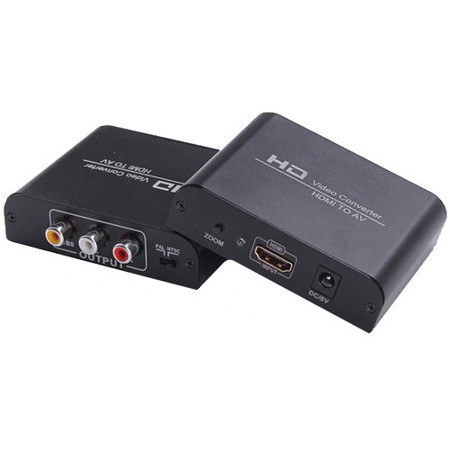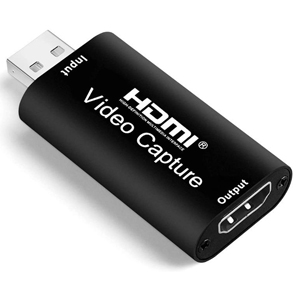
- Best hdmi video capture under 100 Patch#
- Best hdmi video capture under 100 full#
- Best hdmi video capture under 100 license#
It didn't bode well performance-wise for my scrappy little Raspberry Pi.įortunately, I found a better solution by complete coincidence. And that was on my desktop with its high-end GPU and CPU. I tried playing around with ffplay's many command-line flags to speed up the stream, but I never pushed past 800 milliseconds. The LKV373A introduced 838 milliseconds of latency before any re-encoding. There was almost a one-second delay between the target computer and the video playback on my desktop. It was here that I received my first taste of a problem that dogged me throughout the project: latency. Rendering the video stream from the LKV373A with ffplay
Best hdmi video capture under 100 Patch#
In danman's investigation, he discovered a way to intercept and capture the video stream, but the LKV373A speaks a non-standard variant of the RTP protocol that few video tools understand.įortunately, danman contributed a patch to ffmpeg that handles the LKV377A's goofy behavior, so I was able to render the stream using ffmpeg's video player: ffplay -i udp://239.255.42.42:5004 Its intended purpose is to pair with an LKV373A receiver that converts the network stream back to HDMI output. The Lenkeng LKV373A HDMI extender was my first attempt at HDMI video capture.Ĭapturing video was tricky because the LKV373A transmitter isn't a video capture device. It was available from Chinese merchants on eBay for around $40, so it seemed like my best option. Daniel Kučera (aka danman) did an excellent job reverse engineering this device. My first attempt at video capture was to use the Lenkeng LKV373A HDMI extender.

My obvious next step was to find a way to capture my server's display output in the Pi and render it in the browser. Keyboard forwarding isn't so useful if you can't see what's happening on the screen. I described this behavior in depth in my previous post. This causes the keystrokes to appear on the target computer. As the user types, Key Mime Pi captures the key events and translates them into keystrokes through its fake USB keyboard. It also presents a web page and listens for JavaScript key events. Key Mime Pi connects to another computer via USB and registers as a USB keyboard. Key Mime Pi, my early precursor to TinyPilot that only supported keyboard forwarding. Recent versions of the Pi support USB on-the-go (USB OTG), which allows the Pi to impersonate USB devices such as keyboards, thumb drives, and microphones.Īs a proof of concept of my Pi-as-KVM idea, I created a simple web app called Key Mime Pi. The Raspberry Pi is a fully-functional computer that fits on a single chip and costs only $30-60.
Best hdmi video capture under 100 full#
The devices are powerful enough to run a full desktop operating system, so their $30-60 price point makes them a popular tool among hobbyists and programmers.

The Raspberry Pi is a small, inexpensive single-board computer. So, I did what any appropriately irrational programmer would do: spend several hundred hours building my own KVM over IP. Sadly, they're even more expensive, ranging in price from $500 to $1000 per unit.Īs lazy as I am about dragging servers around, I couldn't justify spending $500 to save myself the trouble of swapping cables around a few times per year. They provide similar functionality to Dell's iDRAC, but they're external devices that connect to a computer's keyboard, video, and mouse ports (hence the name KVM). Next, I looked at commercial KVM over IP solutions.
Best hdmi video capture under 100 license#
The license alone costs $300, and it requires expensive custom hardware.Ī license for Dell's iDRAC technology costs $300 per machine plus the cost of hardware. I briefly considered an iDRAC for my next home server, but its hefty price tag quickly put an end to that. It's a chip in Dell servers that provides a virtual console from the moment the system powers on. Commercial solutionsįriends have raved to me about their experience with iDRAC. To get things running again, I have to disconnect everything, drag the server over to my desk, and juggle cables around to connect the server to the keyboard and monitor at my desktop. This is a convenient setup, but it also turns small issues into a colossal pain.Įvery few months, I'll screw something up and prevent the server from booting or joining the network, effectively locking me out of the machine. The server has no keyboard or monitor attached because I access it over ssh or a web interface.

The homelab server I built in 2017 to host my virtual machines

It's been a valuable investment, and I use it every day. A few years ago, I built my own home server for testing software.


 0 kommentar(er)
0 kommentar(er)
